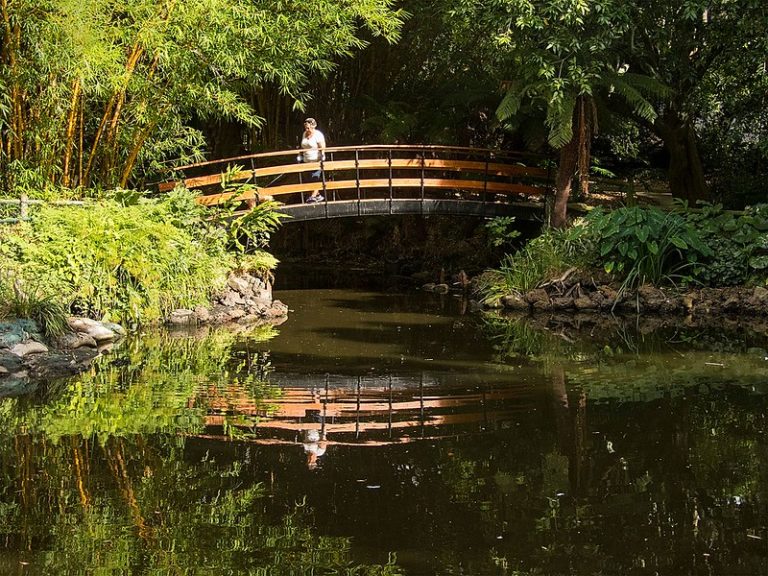Cape Town is one of few cities in the world with a National Park within the city’s limits, allowing city folk to step out into nature from their doorstep. Apart from Table Mountain, the city also hosts a range of tranquil city greenscapes for urban dwellers.
Studies have shown that having a green public space is not only good for the environment but encourages an active lifestyle. This means people living closer to parks exercise more. Areas with more parks also tend to lead to stronger social bonds, as parks provide a space for neighbours to meet and children to play. Public recreational spaces are vital in creating a sense of community.
Here are five public green spaces in Cape Town that we love.
1. Tygerberg Nature Reserve
A trail in Tygerberg Nature Reserve. Picture: Wikimedia commons
Amongst the urban sprawl of the northern suburbs, the slopes of Tygerberg hill offer an escape from the cul-de-sacs of suburbia. Tygerberg is an important reserve, especially when considering that it is the home for threatened and endemic plants. The reserve houses 562 different plant species, 23 of which are threatened. The reserve also includes 137 bird species, 22 reptile species, seven frog and 24 mammal species.
There are numerous trails throughout the reserve, especially on the western slopes near the pristine Swartland shale Renosterveld. The trails are usually not crowded, which makes the reserve an ideal place for trail running, or a picnic spot.

The view from Tygerberg nature reserve. Picture: Flickr commons
The reserve is accessed via an entry gate on 1 Totius St, Welgemoed. Entry is R16 for adults and R8 for children.
Weekdays:
07:30 – 18:00
Weekends and public holidays07:30 – 19:00
2. Zandvlei Recreational Park

Zandvlei Nature Reserve: Flickr commons
The Zandvlei Recreational Park is an open water wetland that is bordered by the suburbs of Lakeside and Muizenberg. Its 254 hectares include a river and estuary that make for scenic surroundings. The area includes open green expanses with braai facilities, making it perfect for picnics. The playground is an ideal spot to let children play, and the park is also the site of the Cape Town international kite festival, usually held in October.
Thanks to the water system within the park, Zandvlei is a great place for those who enjoy water sports. It is used for sailing, canoeing, fishing and windsurfing by locals and visitors alike.
3. Khayelitsha Wetlands Park
Located within Cape Town’s largest township, a wetlands area that was once a littered vlei, now restored to its natural beauty. The wetland park serves as an example of the benefit open spaces can have for a community when properly looked after and utilised by residents. This once polluted area now boasts its own canoe club.

Picture: The Khayelitsha Canoe Club
The goal of the space was to create an urban park within a unique natural setting, providing the residents of Khayelitsha access to recreational facilities and environmental awareness. A Fynbos garden, amphitheatre, braai facilities, sports pitch and netball court have been created to turn it into a multi-use space.
Members of the community have taken great pride in the Wetlands Park, with civilians doing their bit to ensure the park remains in pristine condition. One such person is Siyanda Sopingisa, who operates the township canoe tours. He goes out daily to pick up any rubbish that has collected in the water system as a result of the poor public services. The park is an ecosystem that supports many plants and animal species including a nesting site for a variety of migrant birds.
Today, the park stands out as an example of what can be achieved when using open spaces as a place for the environment to thrive and as a place for the community to enjoy.
4. Nantes Park
There is a story that during the 1970s, Capetonians would go to the park with their radios to listen to the Springbok Radio serial, ‘Die Geheim van Nantes’ (The Secret of Nantes). The activity was so popular that the park eventually became known as Nantes Park.

Picture: Wikimedia commons
Within its 17 hectare space, there are two play areas, an outdoor gym, an open-air amphitheatre and an exhibition area. The park is maintained by the City of Cape Town with the support of the local community.
Aside from its greenscapes, Nantes Park is also a thriving skateboarding hub, with the Bridgetown Skateboarding Crew usually showing off their skills. The brand frames skate culture in a way to reclaim the Cape Flats as a place where the youth can shape a unique identity through skating. “There is a reason why so many skaters from all around identify with us. It’s because there’s honesty in what we produce. We are not chasing podium spots or magazine covers,” the group says.
5. Arderne Gardens
What was once a private estate of Ralph Henry Arderne, established in 1845, is now a property belonging to the City of Cape Town. It also has one of the best collections of exotic trees in South Africa. The original owner was a timber merchant, who collected seeds from all over the world.

Picture: Flickr commons
Six of the trees are distinguished for their age and significance by the City of Cape Town as champion trees. The garden became neglected during the 1980s but in 2004, the Friends of the Arderne Gardens group was established, working with the city to protect, preserve and promote the garden.

A Japanese bridge crossing one of the ponds in the garden makes the space a tranquil escape from the main road. Picture: Flickr Commons
The park is much larger than it seems from the main road, with geese and ducks making it their home, landscapes with pathways, benches and ponds. It makes for a nice breather from the hustle of the main road.









